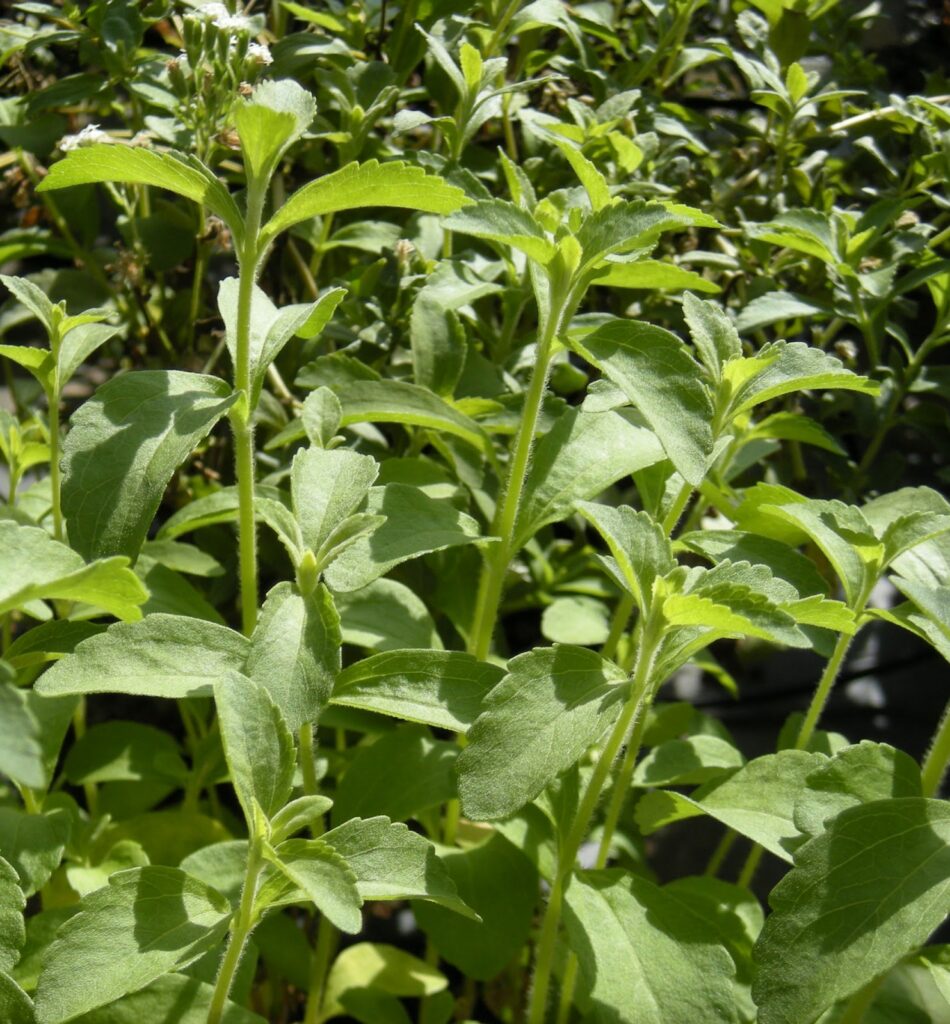Stevia
Stevia rebaudiana (Bertoni) Bertoni
Compositae
Stevia is a small evergreen shrub from the tropical forests of the border area between Paraguay and Brazil.
The Guarani Indians who live on this territory call itKaa-he-e , which could be translated as “leaf as honey”, and have used it for centuries to soften the bitterness of mate and medicinal beverages.
The Europeans discovered stevia in the middle of the 16th century thanks to the Spanish botanist Petrus Jacobus Stevus. In 1899 another botanist, Moisés Santiago Bertoni, studied the plant and said: “When we look at this plant, nothing in particular holds the attention, but when even a small piece of leaf is placed in the mouth, we are very impressed by its sweet taste.” He completes the description of the plant and names it Steviain honor of PJ. Stevus.
In 1931, two French chemists isolated the natural compounds that gave it its sweet taste: rebaudioside A and stevioside, which has a sweetening power 300 times greater than sugar (sucrose).
The Japanese are the first to have worked since 1970 on the development of a non-caloric sweetener from stevia, since the Japanese regulations prohibited at that time the use of synthetic sweeteners such as aspartame. Stevia extract is currently the most widely used sweetener in the Japanese and Korean markets. In France, it was not until 2009 and after several studies of the French Agency for Sanitary Safety of Foods (AFSSA) that the opinion was favorable in using stevia as a food additive.
En France, il aura fallu attendre 2009 et plusieurs études de l’Agence Française de Sécurité Sanitaires des Aliments (AFSSA) avant d’obtenir un avis favorable quant à l’utilisation de la stevia en tant qu’additif alimentaire.
Stevia offers a natural alternative to chemical sweeteners that are used in many sugar-free or low-sugar products. The only downside is for its use in pastry, as it does not support high cooking temperatures.
Today stevia is cultivated all over the world in subtropical areas or in Europe, especially in the Mediterranean area: France, Italy, Spain and Portugal.
China remains the leader of stevia production, with 30,000 hectares devoted to this crop, but European production could witness a significant expansion with the authorization of the plant, in Europe, as a food ingredient.
In the garden, stevia is easy to grow. It prefers a sunny exposure, a light and well drained soil, and regular watering in summer. The plant should be kept safe from frost.
Other plants possess sweetening properties, such as the sweet grass of the Aztecs, Phyla scaberrima (Juss, ex Pers.) Moldenke that you can observe in the Botanical Garden of l’Herbier-du-Diois.
